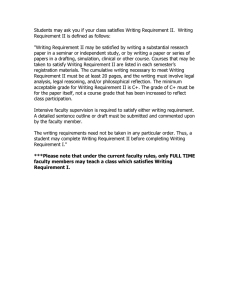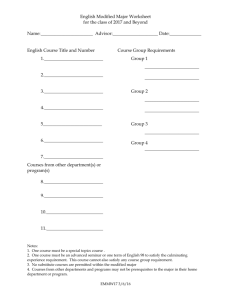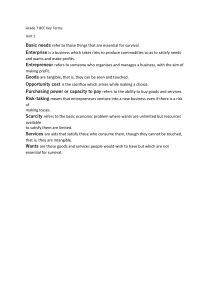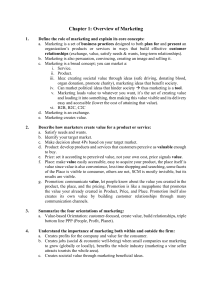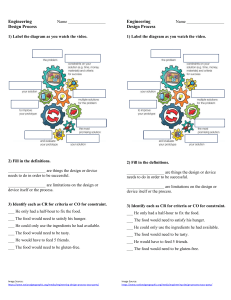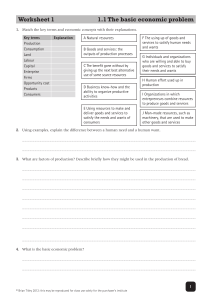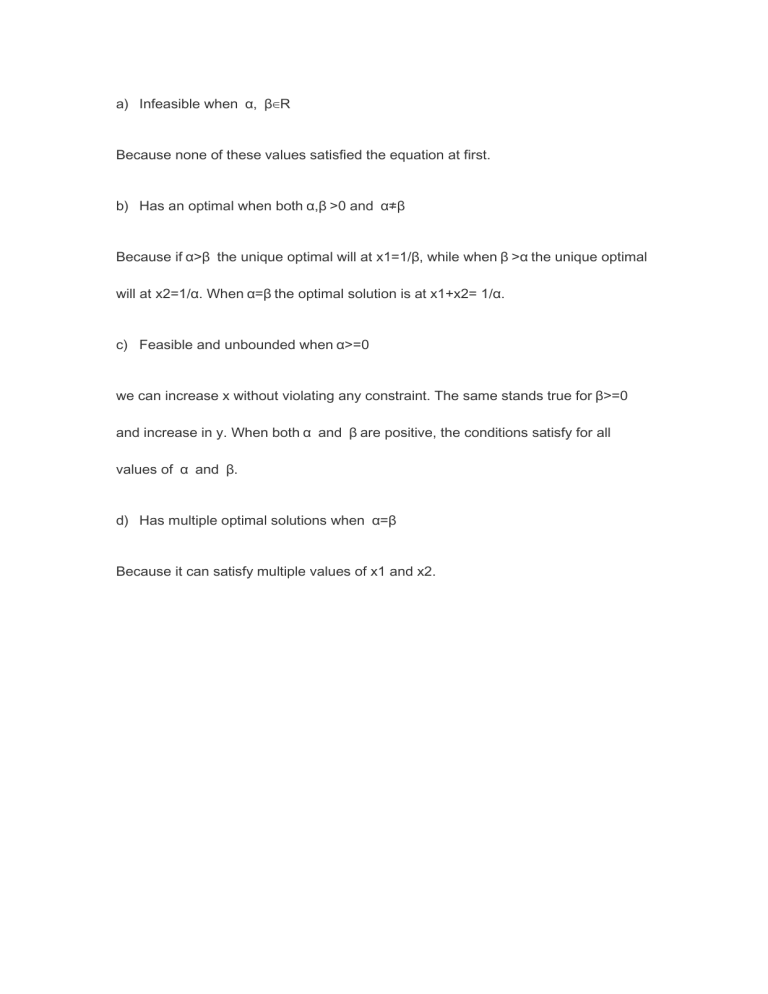
a) Infeasible when α, β∈R Because none of these values satisfied the equation at first. b) Has an optimal when both α,β >0 and α≠β Because if α>β the unique optimal will at x1=1/β, while when β >α the unique optimal will at x2=1/α. When α=β the optimal solution is at x1+x2= 1/α. c) Feasible and unbounded when α>=0 we can increase x without violating any constraint. The same stands true for β>=0 and increase in y. When both α and β are positive, the conditions satisfy for all values of α and β. d) Has multiple optimal solutions when α=β Because it can satisfy multiple values of x1 and x2.
